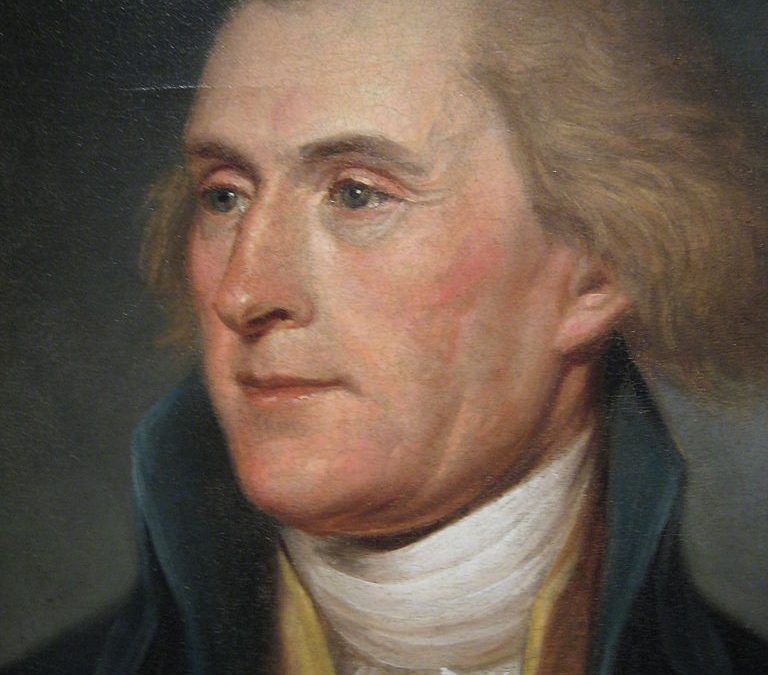USA Weekly: Interview with Jodi Amendola, CEO at Amendola Communications
http://usaweekly.com/2018/01/interview-with-jodi-amendola-ceo-at-amendola-communications/
http://usaweekly.com/2018/01/interview-with-jodi-amendola-ceo-at-amendola-communications/
Company behind nation’s most widely used care management system for pop health taps HIT PR agency to promote its solutions for value-based and integrated care
SCOTTSDALE, AZ Nov. 28, 2017–Amendola Communications, an award-winning healthcare marketing and public relations agency, is thrilled to add population health technology pioneer HealthBI to its customer family. Amendola will be a key player in HealthBI’s plans for rapid growth in 2018, promoting solutions that are already the most widely deployed of their kind while expanding awareness of the company as a visionary thought leader in value-based and integrated care.
These thought leadership messages will be of particular importance in 2018 as more payers engage providers in risk-based contracts. Under such reimbursement models, payers and providers must enter into a newly collaborative relationship and share tools that give insight into the patient’s real time picture of health. HealthBI is not only a knowledgeable vendor of the technology solutions needed, it has a keen understanding of how to enable provider adoption indeed, embrace of healthcare that focuses on quality and better outcomes.
“Jodi Amendola and her team at Amendola Communications clearly get the HealthBI value proposition. With their deep and broad understanding of the healthcare landscape, we are confident that we have selected the ideal partner to promote our mission far and wide,” said Scott McFarland, President, HealthBI.
Amendola will help build HealthBI’s thought leadership profile through a mix of targeted media relations, byline article placements, and strategic speaking opportunities. Additionally, the agency is helping HealthBI produce a knowledge library that will feature case studies and guides on a range of topics from using technology to reduce unnecessary high utilization of ED and acute care, to successfully integrating behavioral healthcare and primary care, to spurring provider adoption of quality and performance monitoring.
“Very soon after our introduction to HealthBI, we realized this company is poised to help the healthcare industry fully embrace value-based care and integrated care. Given the tremendously positive impact these models of care are set to make, it is incredibly exciting to help HealthBI advance its mission,” said Jodi Amendola, CEO, Amendola Communications.
Breaking down the barriers to better models of care
Value-based care holds the key to gaining control of our ballooning national health bill, yet the transition has been difficult for providers and payers to make. In a parallel development, the movement to integrate medical and mental healthcare may finally help improve outcomes for a long-underserved population, yet this shift, too, has been challenging to navigate.
HealthBI’s technology solutions and health data expertise are aimed at making the transitions to these new models of care successful and cost-effective. The company’s flagship care management and care coordination platform brings all care teams together to improve outcomes for even the highest risk patients, while helping both payers and providers meet quality measures.
About HealthBI
Headquartered in Scottsdale, Arizona, HealthBI was created by a team of industry leaders and physicians to fill the need for tools that enable health care payers and providers to reduce admissions and readmissions, automate care transition and improved value-based care performance and HEDIS outcomes. Today, the company’s care management and care coordination platform for population health management is the most widely deployed in the nation used in over 60,000 clinical sites across 50 states. HealthBI customers have reported results that span from a 25 percent decrease in 30 day re-admits to a nearly 300 percent improvement in closing gaps in patient care. To learn more about HealthBI, visit healthbi.com and follow HealthBI on Twitter and LinkedIn.
Jodi Amendola | jamendola@acmarketingpr.com | 602-614-3182

“Story telling is the oldest form of teaching,” Matt Cavallo declared when we met on May 23. I couldn’t agree more. Great story telling has always intrigued me. Maybe that’s why I’m in PR. I have always believed that behind every organization is a zealous individual with an epic story waiting to be shared. It’s usually the CEO or founder, though not always.
Matt is a passionate patient advocate who dedicates his life to the fight against multiple sclerosis. He has been named among the top 10 Social HealthMakers by WCG and his blog was selected as one of Healthline’s top multiple sclerosis picks in 2015. His story of being diagnosed and overcoming the physical and emotional challenges associated with having a chronic disease can be read in his memoir, The Dog Story: A Journey into a New Life with Multiple Sclerosis.
What started as a simple half-hour meet-and-greet with Amendola Communications agency staff turned into a 90-minute conversation. Who has that kind of time, you ask? Well, Matt knew how to keep our attention: he had us laughing one moment and fighting back tears the next. It’s a skill few people have but many aspire to. This ability to connect comes in really handy during media interviews at large trade shows (such as HIMSS) where our PR clients (health IT vendors) get to pitch their product or solution to editors who decide on the spot whether they care enough to write about them or not.
GetWellNetwork founder and CEO Michael O’Neil was diagnosed with non-Hodgkin’s lymphoma at the age of 28. While the medical outcome was excellent, the patient experience was challenging. After four cycles of chemotherapy, he started GetWellNetwork to help hospitals improve performance and outcomes through patient engagement. Michael and his team work tirelessly to ensure the voice of the patient is heard. Today, more than 4.6 million patients use GetWellNetwork technology to engage in their healthcare. Take a minute to watch Michael tell his story in this short video.
Growing up in a family of doctors, ClearDATA CEO Darin Brannan got a firsthand look at the challenges healthcare practitioners face in treating patients using paper and outdated technology. It made him painfully aware of the number of people who die each day as a result of medical errors long before it became national news.
Despite the availability of electronic health records and other technologies that were supposed to solve the problem, reports show that more than 1,000 people still die each day due to medical errors. At the center of this seeming disconnect is a lack of cohesiveness among advanced information technologies. Darin believes that, “Healthcare is less of a science problem, it’s more of an information problem.”
In 2011, he co-founded ClearDATA to apply his cloud computing expertise to healthcare in order to remove the technical obstacles inhibiting patient safety and costing lives. Today, ClearDATA is recognized by organizations such as CB Insights as a leading healthcare information security services company, with $54 million in funding and a customer portfolio that includes some of the largest healthcare providers in the nation.
Dave Bennett, EVP, Orion Health, is passionate about precision medicine. He often tells the story about his son, Carter, who has cystic fibrosis (CF). Here is how he tells it.
Carter’s story
About a decade ago, my oldest son, Carter, was diagnosed with cystic fibrosis.
Like most kids with CF, Carter had a host of physical problems, like lung infections due to mucous build-up and thrive issues due to pancreas blockage. In eighth grade his lungs needed a thorough cleaning, so he was hospitalized and homebound for three consecutive weeks with a PICC line.
Five years ago, Vertex Pharmaceuticals released a drug designed to address Carter’s specific genetic variation of CF, one that only four percent of patients have.
But when I told Carter’s doctor about it, he said it wouldn’t help Carter because he didn’t have that genetic variation.
Once I pressed the doctor to review 60 pages of Carter’s data, however, the doctor soon reversed his position.
“This is a game changer,” he said.
Now let’s be clear: Carter’s doctor is a great doctor. But he didn’t have the tools to help him analyze that 60 pages of data and connect my son to a promising new drug therapy that went on to stabilize his lung function, end his annual sinus surgeries, eliminate his regular bronchial scopes, made his ED visits a thing of the past, and allowed him to flourish into a six-foot-two-inch, 225-pound captain of his high-school football team. Today, Carter is a thriving college student, our payers don’t have to pay for all the procedures mentioned above anymore, and his mom and I don’t worry about him one bit.
That is the promise of precision medicine exemplified. But in the future, rather than rely on a highly interested advocate like a parent who’s passionate about precision medicine to provide that cognitive support, payers and providers will be able to rely on technology that synthesizes and analyzes the data (e.g., those 60 pages Carter’s doctor couldn’t effortlessly process) and utilize it in the right context at the right time.
“This is my mission,” Dave tells journalists. “I want to help doctors and patients in making decisions about what will help them. To do this work, you really need focus at the mission level, because it’s going to change healthcare for the better and make a difference in people’s lives.”

HIMSS is now a distant memory and you’re struggling to remember what happened last week, let alone the show’s key takeaways. Never fear, I’ve got you covered! I reached out to several top industry analysts with whom I’ve worked for years, as well a Health 2.0 co-founder, and summarized the key themes. Consider it your industry crystal ball reading for 2017.
#1 — Artificial Intelligence (AI) will be the bright, shiny object of 2017.
Barry Runyon, Research VP, Gartner:
“AI, analytics, interoperability and cybersecurity seemed pretty pervasive [at HIMSS17] AI in particular.”
Sven Lohse: Healthcare IT Services Strategies, IDC Health Insights:
“For the first time at scale, HIMSS17 showcased applications of artificial intelligence and machine learning technology in the healthcare context with promise for improving operations, finance and care delivery.”
Matthew Guldin, Senior Analyst, Chilmark Research:
“AI and machine learning seemed to dominate as the buzzword(s) of HIMSS17. Finding actual use cases was a bit more challenging, but there were vendors that were demonstrating its potential value around medication refills, pre-visit planning and virtual health coaching.”
#2 Population health and care management/coordination will receive a face-lift with voice assistants, cloud-based platforms and the seemingly ubiquitous AI.
Nancy Fabozzi, Principal Analyst, Transformational Health, Frost & Sullivan
“Voice is the next big user interface for computing and truly something to get excited about for its potential in healthcare, especially voice assistants for care management and patient engagement. Amazon’s Alexa is taking the lead here and many new companies will emerge to support this important trend. Merck’s new partnership with Amazon to support voice-enabled solutions for chronic disease management is a very positive development; we will be watching this one closely.”
Matthew Holt, Co-founder of Health 2.0
“[At HIMSS] the new cloud-based population health and analytics systems showed promise, if not yet penetration.”
Matthew Guldin, Senior Analyst, Chilmark Research:
“If providers are going to be effective at scaling their present care management programs, a much higher degree of automation will be required with the application of this [AI and machine learning] technology in care management applications playing a critical role.”
Deanne Kasim, Founding Partner, Santesys Solutions
“Regardless of the outcome of “repeal and replace,” value-based reimbursement and better care coordination are here to stay and will only grow in importance.”
#3 Blockchain may be the answer to the interoperability and cybersecurity questions.
Sven Lohse: Healthcare IT Services Strategies, IDC Health Insights:
“Blockchain in healthcare also garnered significant attention with multiple [HIMSS] sessions highlighting how blockchain could solve such challenges as interoperability, security and making healthcare transactions more transparent.”
Deanne Kasim, Founding Partner, Santesys Solutions
“Look for blockchain to be a bigger topic at HIMSS18.”
#4 Bonus thoughts: TCO & bringing people back into the equation.
Barry Runyon, Research VP, Gartner:
“Looking around, I think the TCO of IT is going to become a bigger issue.”
Barbara McGann Chief Resource Officer at Horses for Sources; FSH Research
“While at HIMSS, I saw an endless variety of technology offerings, and among them, people physicians, EMTs, nurses, patients, caregivers all of whom want a healthier society. We need to not only connect the systems for interoperability, but also connect the individuals. IT professionals need to be just as excited as doctors, nurses and caregivers about truly changing people’s lives through healthcare in order to really have an impact.”
Deanne Kasim, Founding Partner, Santesys Solutions
“I noticed more focus on the Social Determinants of Health (SDoH), but vendors have different approaches in terms of what data they have and how it is used. I think the industry is just beginning to tap the potential here of how to access and use this information.”
Finally, my personal prediction: Regardless of your technology, product or service, 2017 will offer endless possibilities for growth if you follow best practices, execute efficiently and take advantage of strategic industry guidance. The A-team is here to help! Contact us at @AmendolaComm or at info@acmarketingpr.com.

“The light which has been shed on mankind by the art of printing has eminently changed the condition of the world.” Thomas Jefferson, writing to John Adams, 1823
There has been a lot of attention paid lately to the rise of “fake” news, alternative facts, and the role a free and open press should play in a democracy. You can read about that ad nauseam on Facebook, Twitter, news portals and even GASP in your daily print newspaper! (Yes, they do still exist.)
I am not here to debate the merits of the respective positions on these political and cultural issues. What I am here to do is to say thank you to the healthcare IT press who cover our clients here at Amendola Communications (AKA, the A-Team).
We just finished #HIMSS17, by far the biggest conference of the year for our clients. We had more than 20 clients there and scheduled more than 130 meetings with the media and analyst firms at the conference. It was an unbelievably extensive and intensive effort by the A-Team over the past two months, and as the managing director for the agency I applaud their hard work over the past two months.
But I am also a former member of the press, a business writer, bureau chief, editor and yes, the worst of the worst, a sports columnist by training and trade. So I also want to applaud all my friends in the healthcare IT press the folks who took countless calls, tweets and emails all day long for weeks on end from me and the rest of the A-Team, not to mention dozens of other PR agencies and departments around the country, prior to the show.
All I can say to my friends in the media is thank you, again.
What gets lost in the rush to stake out our positions and perspectives on whatever is published through the media either in print, through the airwaves, or through digital channels is the value that a free and open press does bring to our society.
Just in our little corner of the world Healthcare IT that value comes in the form of informing, educating and influencing technology buyers. It comes in the form of honoring industry innovators and staging thought leadership events around the country and world. It comes in the form of educating readers on best practices in healthcare. It comes in the form of driving interest in topics such as CRISPR gene-editing, persona-based behavioral analytics, and value-based care and reimbursement.
So again, thank you to all of the A-Team’s friends in the media.There are so many, many of you who met with us at HIMSS 17 and work with the A-Team every day throughout the year to inform and educate the healthcare IT industry.
You are making significant, worthwhile contributions to our industry that often go overlooked or underappreciated but shouldn’t not in an industry as important as healthcare IT, not for an audience that has as significant an impact on the well-being of the entire American public every minute and hour of every day.
As Jefferson said to Adams, your work continues to shed light on mankind and eminently changes the condition of the world in which we live. And for that we here at the A-Team thank you all so very much.